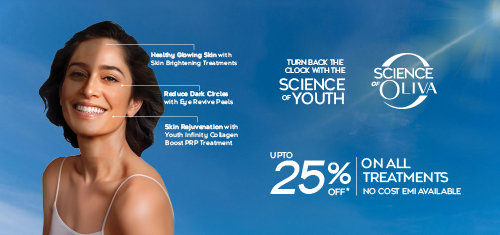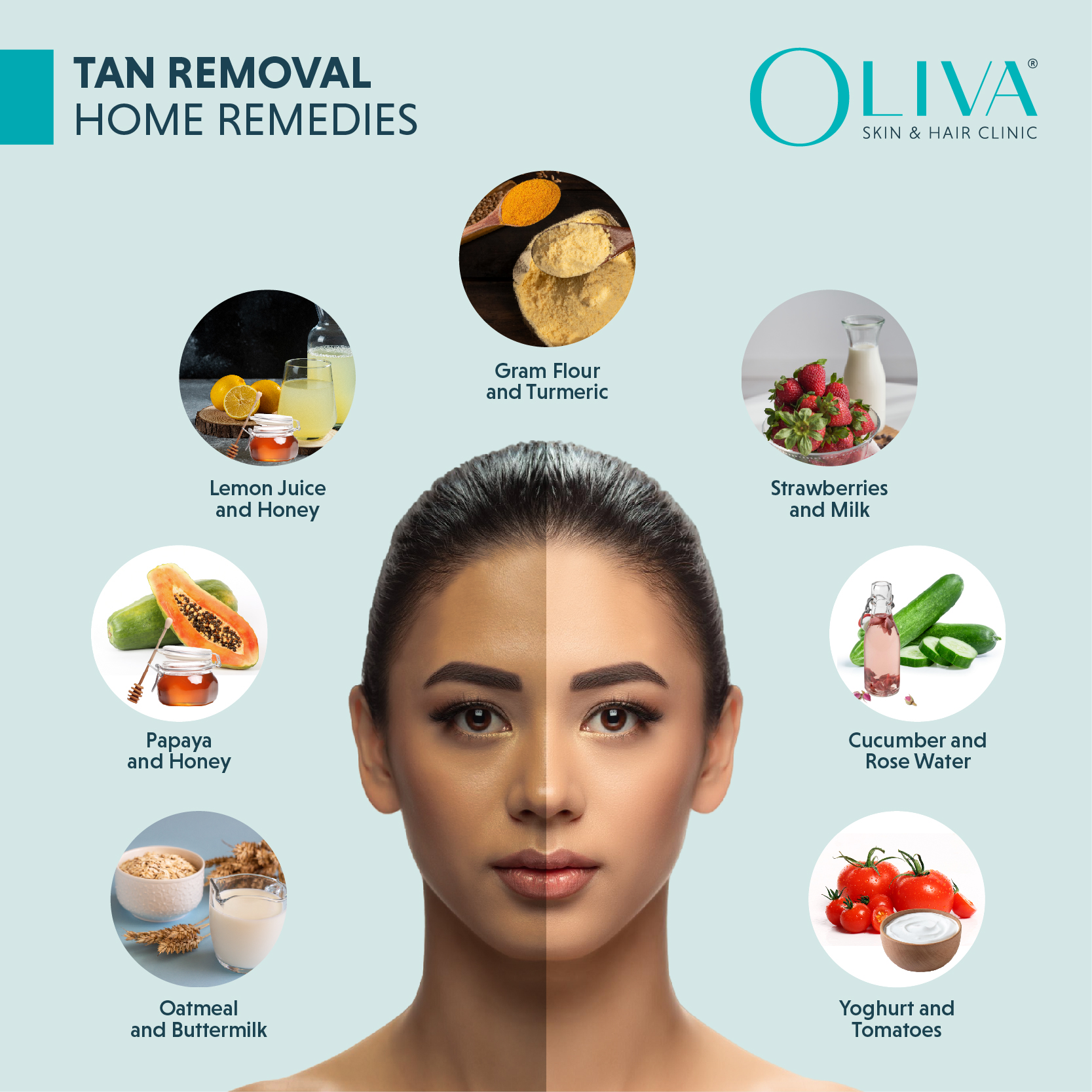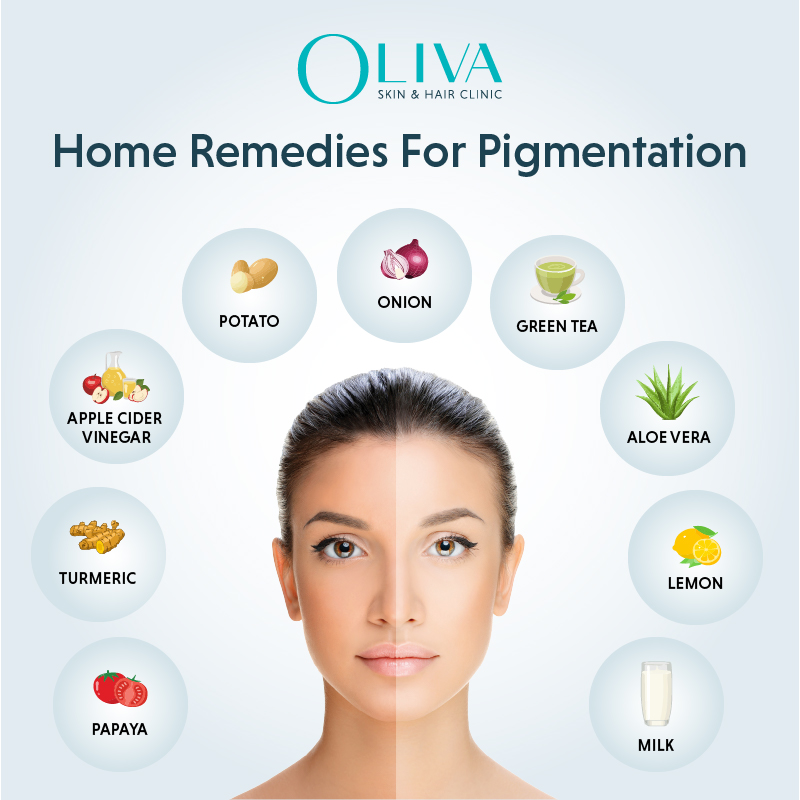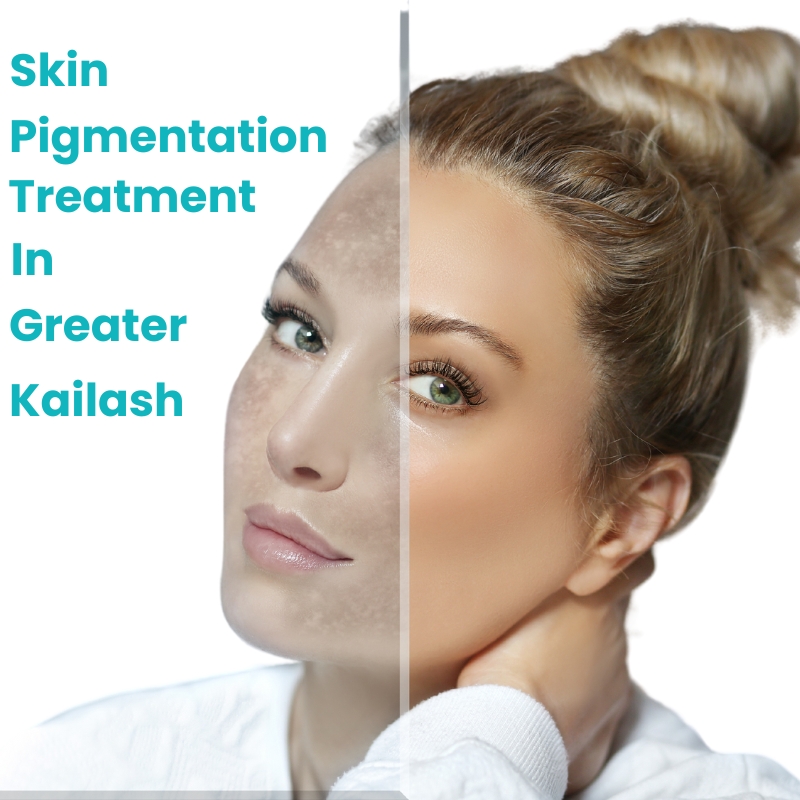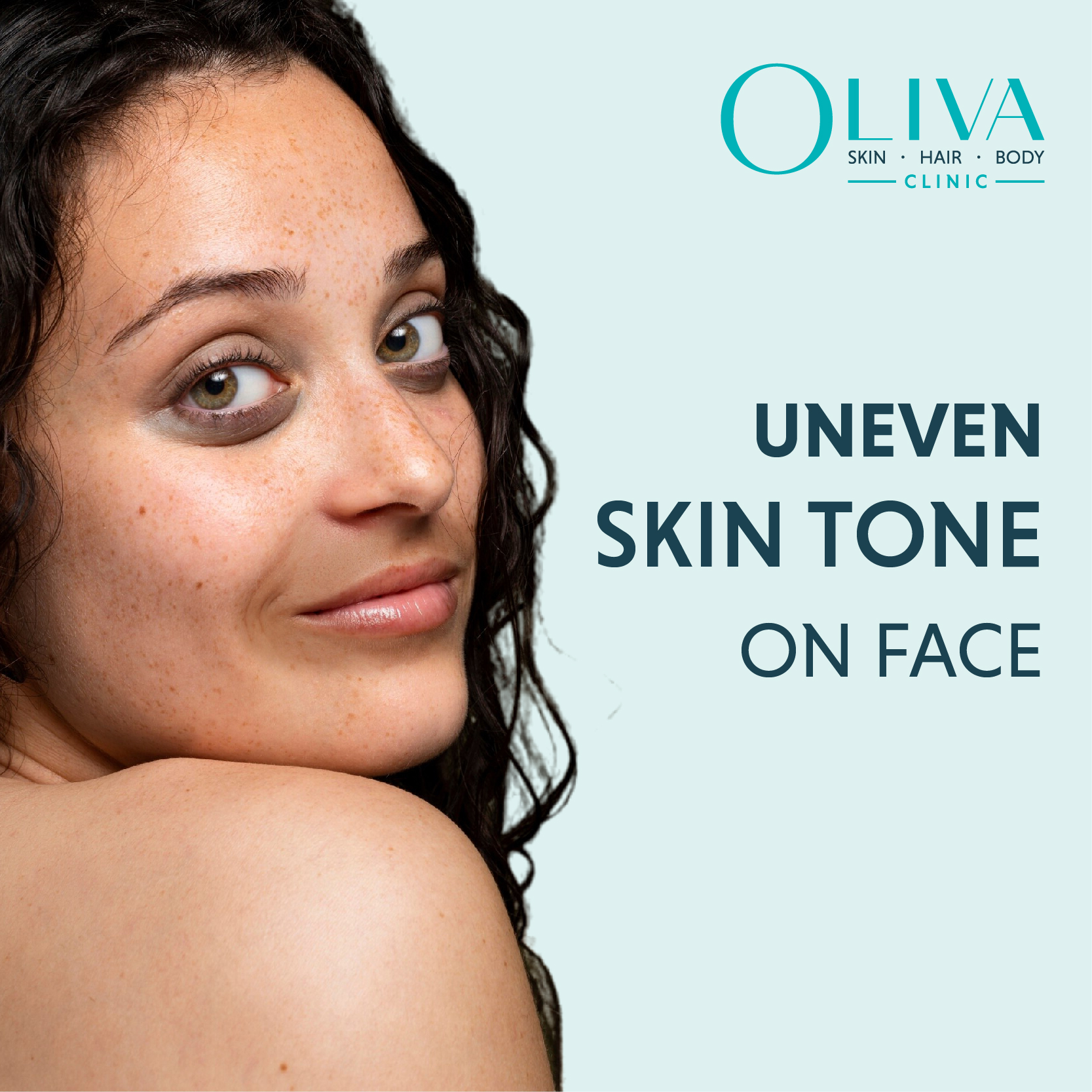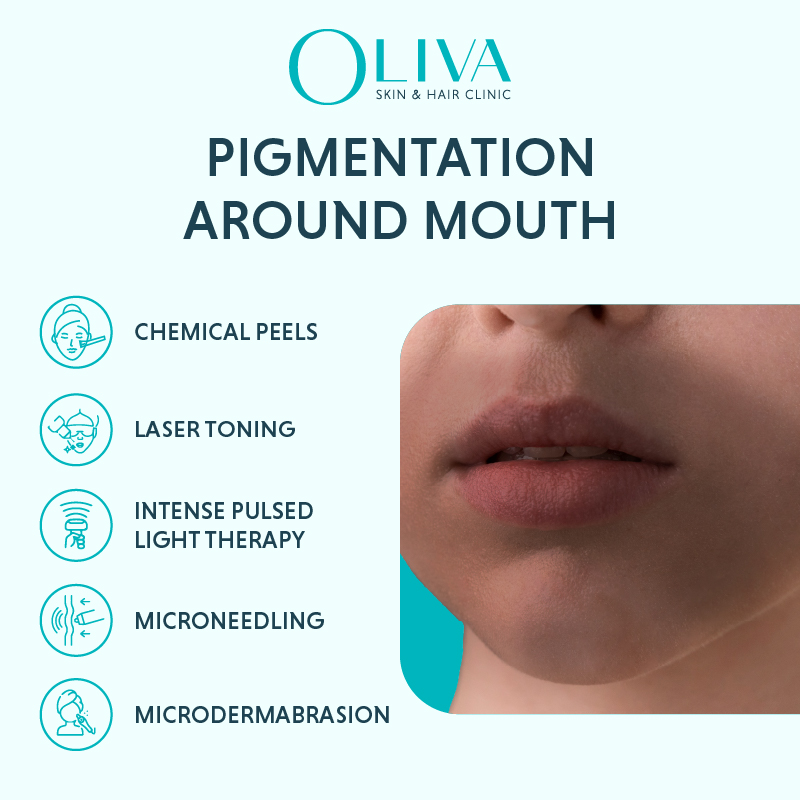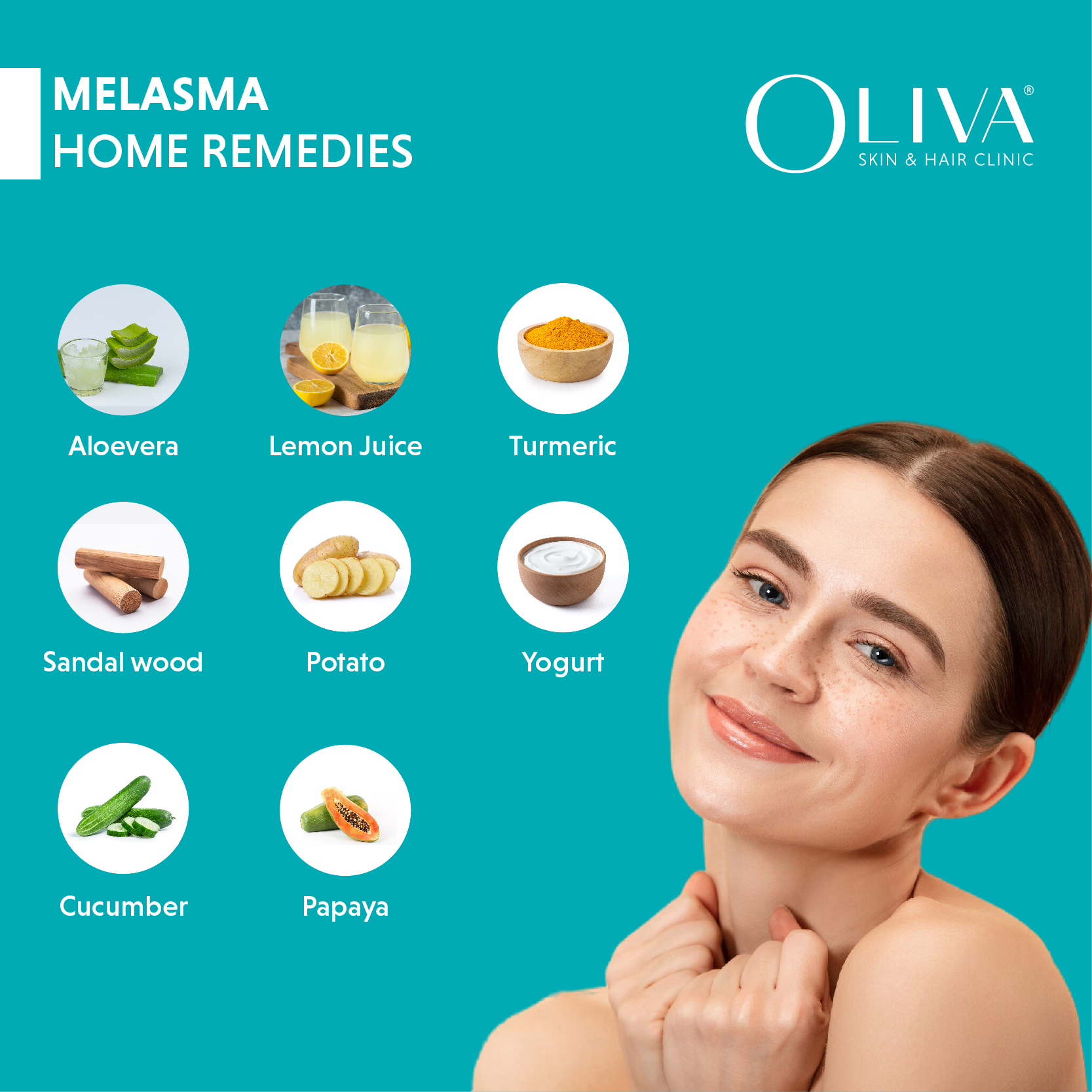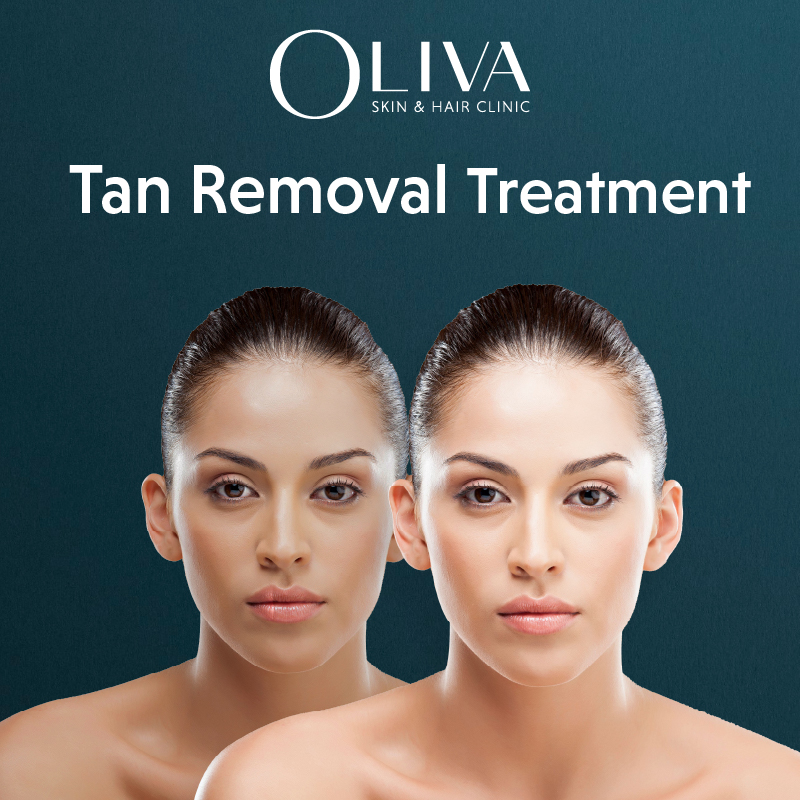20 Simple Home Remedies For Sun Tan Removal – Natural Ways
Prolonged sun exposure often leads to unwanted tanning. If you are looking for tan removal home remedies, you are on the right page! Learn some great tips for sun tan removal at home, specifically focusing on how to remove tan from the face and hands. Discover simple and effective ways to achieve a brighter, more even skin tone with natural and effective sun tan removal home remedies.
What Causes Tanning?
There are two types of ultraviolet radiation caused by sun rays: Ultraviolet A (UVA) and Ultraviolet B(UVB).
The UVB radiation gives you sunburns, damaging your skin’s epidermal (topmost) layer.
UVA radiation is responsible for tanning. These rays penetrate under the epidermal layer, triggering the melanocytes to produce melanin to protect your skin from burning. People with darker skin tones usually produce more melanin.
Tan removal home remedies are a great way to restore your original skin tone. Depending on the extent of your daily sun exposure, you can decide how often to use these remedies in your skincare routine.
NOTE:
Always remember that whether you tan easily or not is not an indication of being protected against skin cancer or any other skin problems. Sun protection is a must for everyone.
Tan Removal Home Remedies:
For those wondering how to remove tan, here are some highly effective home remedies for face tan and body tan removal. Try them all or combine them to find what works best for your skin type.
1.Potato:
Potatoes are abundant in vitamin C and catecholase enzymes. They help to lighten the skin and reduce pigmentation and skin tanning. Potatoes are also rich in antioxidants, which aid skin repair after sun damage.
How To Use: Squeeze out the juice from one medium-sized raw potato after grating it. Apply it to your skin on the tanned areas. Leave it on for 20 minutes, and then rinse it off with lukewarm water.
2.Turmeric:
Turmeric is popular for its anti-inflammatory and skin-lightening properties due to its compound curcumin. It helps in reducing melanin production, thus lightening the tanned skin.
How To Use: Mix turmeric with milk or yoghurt to form a paste, apply it to the affected areas, leave it on for 20 minutes, and then rinse off with lukewarm water.
3.Lemon Juice:
Lemon juice is full of vitamin C and citric acid, which act as natural bleaching agents and help lighten the tan. However, it can be harsh on the skin, so it’s best used diluted.
How To Use: Mix lemon juice and water in equal quantities and apply to the tanned areas. Leave it on for 10-15 minutes before washing off with cold water.
4.Papaya:
Papaya contains the enzyme papain and alpha hydroxy acids (AHAs). These help exfoliate the skin and reduce tan. The antioxidants in papaya also promote skin repair.
How To Use: Mash a ripe papaya and apply it to the areas with maximum tanning. Leave it on for 20 minutes, and then rinse off with lukewarm water for a brighter complexion.
5.Tomato:
Tomatoes contain the antioxidant lycopene that helps lighten the skin and protect it from UV damage. They also contain vitamin C, which brightens the skin and removes tan.
How To Use: Apply fresh tomato pulp or juice to the tanned areas, leave it on for 15-20 minutes, and then wash off with water.
6.Almonds:
Almonds are rich in antioxidants and vitamin E. These nourish and lighten the skin. They help in reducing pigmentation and promoting an even skin tone from tan.
How To Use: Soak a few almonds overnight and grind them into a paste next morning with milk. Apply to the tanned areas, leave it on for 20 minutes, and then rinse off with lukewarm water.
7.Coconut Milk:
Coconut milk contains the skin-nourishing goodness of vitamins C and E, which help reduce tanning. Its moisturising properties also make the skin soft and supple.
How To Use: Apply fresh coconut milk to the tanned areas with a cotton ball, leave it on for 20 minutes, and then rinse off with lukewarm water.
8.Aloe Vera:
Aloe vera has always been popular for its soothing and healing properties. It is rich in the compound aloin, which helps to lighten the skin by reducing tan.
How To Use: You can apply pure aloe vera gel directly to your skin like a lotion. For the best results, leave it on overnight. Regular use can help lighten the tan gradually. It also improves skin texture to give you flawlessly smooth skin.
9.Gram Flour:
Gram flour, or besan, is a natural exfoliant that removes dead skin cells and lightens your tan. When combined with turmeric and milk or yoghurt, it enhances skin brightening results.
How To Use: Make a paste with gram flour, turmeric, and milk or yoghurt, apply to the tanned areas, leave it on until dry, and then wash off with lukewarm water.
10.Honey:
Honey is a natural humectant and has antioxidant properties that help repair and lighten skin. It also moisturises the skin, making it supple and soft.
How To Use: You can apply raw honey directly to the tanned areas. Leave it on for 20 minutes, and then rinse off with lukewarm water for a natural glow.
11.Lentil:
Lentils, particularly red lentils (masoor dal), are effective in exfoliating and lightening the skin. They contain proteins and nutrients that rejuvenate the skin.
How To Use: Soak lentils overnight, grind them into a paste, apply to the tanned areas, leave it on for 20 minutes, and then rinse off with lukewarm water.
12.Saffron:
Saffron has been popular for centuries for its skin-lightening and brightening properties. It contains antioxidants and vitamins that reduce sun tan.
How To Use: You can soak just a few strands of saffron in milk, apply it to the tanned areas, leave it on for 20 minutes, and then wash off with lukewarm water.
13.Lemon:
Lemon is a natural bleaching agent as it contains vitamin C and citric acid. These help lighten the skin and reduce tan.
How To Use: Apply fresh lemon juice to the tanned areas, leave it on for 10-15 minutes, and then rinse off with cold water. Always follow up with a moisturiser to prevent dryness.
14.Multani Mitti:
Multani Mitti, also called Fuller’s Earth, is a natural clay. It contains minerals that help remove impurities and tan. Multani Mitti absorbs excess oil and has a cooling effect.
How To Use: Mix Multani Mitti with rose water to form a paste. Apply to the tanned areas. Leave it on until dry, and then rinse off with cold water.
15.Cucumber:
Cucumbers have a high water content and are rich in antioxidants and silica, which cool and soothe the skin while reducing tan. They also contain vitamin C, which brightens the skin.
How To Use: Apply cucumber juice or slices directly to the tanned areas, leave it on for 15-20 minutes, and then rinse off with cold water.
16.Yoghurt:
Yoghurt is rich in lactic acid. It helps moisturise and exfoliate the skin, reducing the tan.
How To Use: Apply plain yoghurt directly to the tanned areas, leave it on for 20 minutes, and then rinse off with lukewarm water for a refreshed and lighter complexion.
17.Apple Cider Vinegar:
Apple cider vinegar contains acetic acid. It helps lighten skin pigmentation and remove tan. It also balances the skin’s pH levels.
How To Use: Dilute apple cider vinegar with an equal amount of water, apply to the tanned areas with a cotton ball, leave it on for 10-15 minutes, and then rinse off with cold water.
18.Grape Seeds:
Grape seeds are rich in antioxidants like vitamin E and resveratrol, which help repair sun damage and lighten tan. You can directly apply grape seed oil to the skin.
How To Use: Massage the tanned areas with a few drops of grape seed oil, leave it on for 20 minutes, and then rinse off with lukewarm water.
19.Green Tea:
Green tea comes packed with antioxidants that help repair sun-damaged skin and reduce tan. It also has anti-inflammatory properties that soothe the skin.
How To Use: Brew green tea, let it cool, apply it to the tanned areas with a cotton ball, leave it on for 20 minutes, and then rinse off with cold water.
20.Sandalwood:
Sandalwood has natural skin-lightening and anti-inflammatory properties that help reduce tan and soothe the skin. It also has a cooling effect.
How To Use: Make a paste with sandalwood powder and rose water, apply to the tanned areas, leave it on until dry, and then rinse off with cold water for a brighter complexion.
Easy To Use Home Remedies For Face Tan:
If you have little time on a daily basis to carry out elaborate sun tan removal at home, here are some easy and quick home remedies for face tan. These face packs feature readily available kitchen items and are quick to put together. Take a look:
Oatmeal and Buttermilk Face Mask:
Oatmeal is a natural exfoliant. It has the ability to remove dead skin cells when used as a scrub in its powdered form. Buttermilk contains lactic acid, which helps to lighten and soften the skin. Together, they reduce tan effectively and restore a bright complexion.
How to prepare: Mix two tablespoons of oatmeal with three tablespoons of buttermilk to form a paste.
How to use: Apply to the face, gently massaging in circular motions. Leave it on for 15-20 minutes, then rinse off with lukewarm water.
Honey and Papaya Face Mask:
Papaya contains the enzyme papain, which exfoliates and lightens the skin, while honey is a natural moisturiser with antibacterial properties. Together, they reduce tan and hydrate the skin.
How to prepare: Mash a few slices of ripe papaya and mix it with one tablespoon of honey.
How to use: Apply the mixture to the face and leave it on for 20 minutes. Rinse off with lukewarm water for a radiant skin tone.
Lemon Juice and Honey Face Mask:
Lemon juice is rich in vitamin C and citric acid, which act as natural bleaching agents, while honey moisturises and soothes the skin. Together, they lighten the tan and nourish the skin.
How to prepare: Mix two tablespoons of lemon juice with one tablespoon of honey.
How to use: Apply to the face and leave it on for 15-20 minutes. Rinse off with lukewarm water. This pack could lead to a little dryness, so do not forget to apply a hydrating moisturiser.
Gram Flour and Turmeric Face Mask:
Gram flour exfoliates and removes dead skin cells, while turmeric has anti-inflammatory and skin-lightening properties. This combination helps in reducing tan and restoring an even skin tone.
How to prepare: Mix two tablespoons of gram flour with a pinch of turmeric and enough milk or yoghurt to form a thick paste.
How to use: Apply to the face, leave it on until it dries, and then rinse off with lukewarm water. Alternatively, you can let it dry partially and scrub off the mask gently using circular motions for an exfoliation effect.
Strawberries And Milk Face Mask:
Strawberries contain alpha-hydroxy acids (AHAs) that exfoliate and lighten the skin, while milk has lactic acid and moisturising properties. Together, they reduce tan and brighten the skin.
How to prepare: Mash 2-3 strawberries and mix with two tablespoons of milk to form a paste.
How to use: Apply to the face, leave it on for 15-20 minutes, and then rinse off with cold water for a fresh and glowing complexion.
Cucumber and Rose Water Face Mask:
Cucumbers have a high water content and antioxidants that soothe and hydrate the skin, while rose water has anti-inflammatory properties and helps maintain the skin’s pH balance. Together, they cool and lighten tanned skin.
How to prepare: Grate half a cucumber and mix it with two tablespoons of rose water.
How to use: Apply on the face, leave it for 10-15 minutes, and then rinse off with cold water for a refreshed look.
Yoghurt and Tomatoes Face Mask:
Yoghurt contains lactic acid, which exfoliates and lightens the skin. On the other hand, tomatoes are rich in lycopene and vitamin C. These protect and brighten the skin. Together, they effectively reduce tan and improve skin texture.
How to prepare: Blend two tablespoons of yoghurt with tomato paste to form a smooth paste.
How to use: Apply to the face, leave it on for 20 minutes, and then rinse off with lukewarm water for a clear and radiant skin tone.
How To Prevent Tanning?
More important than learning how to remove tan from the face is understanding how to prevent tanning. Do you know that skin tanning happens even when you are indoors?
Therefore, irrespective of whether you go outdoors regularly or are a homebody, you need sun protection. Here are some tips to prevent tanning you must try:
Cleansing:
Regular cleansing helps remove dirt, oil, and impurities that can block pores and increase the risk of hyperpigmentation. Make sure you are using a gentle cleanser best suited to your skin type. Cleanse twice a day to keep your skin fresh and clean.
Exfoliation:
Exfoliating removes dead skin cells and helps new, healthy tissue emerge. Regular exfoliation can also reduce dull and tanned skin. For the best results, use a mild scrub once a week.
Moisturise:
Regular moisturisation of the skin prevents dryness and helps it maintain its barrier function. Moisturised and hydrated skin is less susceptible to tanning. Choose a moisturiser that suits your skin type and apply it daily.
Apply Sunscreen Daily:
Sunscreen protects the skin from harmful UV rays, which cause tanning. Use a broad-spectrum sunscreen with an SPF of at least 30. Remember to reapply sunscreen every two hours, especially if you are outdoors.
Staying Hydrated:
Drinking plenty of water keeps your skin hydrated. This helps maintain the skin’s elasticity and barrier function, reducing the risk of tanning. You must always aim to drink at least eight glasses of water a day.
Avoid Direct Sunlight:
Reduce your exposure to direct sunlight, especially between 10 a.m. and 4 p.m., when UV rays are strongest. Seek shade whenever possible to protect your skin from tanning.
Antioxidant Consumption:
Exposure to UV rays leads to oxidative stress and early signs of ageing. Ageing skin tans more, and vice versa1. Consuming antioxidant-rich foods can protect your skin from this damage. Some good examples are fruits, vegetables, nuts, and green tea.
Avoid Perfumes:
Perfumes often contain ingredients that make skin more sensitive to UV rays. Instead of using perfume on the skin, apply it to your clothes.
Use Protective Clothing And Accessories:
Hats, sunglasses, and umbrellas provide additional protection against the sun and help prevent tanning. Wear long-sleeved shirts, pants, and other clothing to protect your skin from UV exposure.
Check Your Medication:
Some medications can increase your sensitivity to the sun, leading to a higher risk of tanning. It is best to consult your dermatologist for the precautions.
Check Ingredients In Skincare Products:
Many skincare products have active ingredients like retinoids or AHAs that make the skin more sensitive to the sun rays. Use them at night and apply sunscreen during the day.
Avoid Tanning Beds And Sunlamps:
Tanning beds and sunlamps emit UV radiation that can cause tanning and increase the risk of skin cancer. If you want a tanned look without the harmful effects, it is better to opt for self-tanning products.
Importance Of Sunscreen In Preventing Tanning:
Using sunscreen with SPF 30 or more is very important to prevent tanning. Here are some more reasons why using sunscreen is vital for skin health:
Blocks UV Radiation:
Sunscreen contains active ingredients that work as a barrier against UVA and UVB rays. They help prevent tanning, premature ageing, and skin cancer.2
Prevents Sunburn:
You can reduce the risk of getting sunburn by regularly using sunscreen.
Minimises Skin Damage:
Sunscreen protects against long-term skin damage caused by oxidative stress from over-exposure to UV rays3. Oxidative stress can cause fine lines, wrinkles, sunspots, and other signs of sun damage.
Maintains Skin Health:
Overexposure to UV rays often leaves the skin inflamed and sensitive. By using sunscreen, you can protect and maintain overall skin health.
Reduces Hyperpigmentation:
By blocking UV rays, sunscreen helps prevent and reduce melasma, freckles, and sunspots, promoting a more even skin tone.
Lowers Risk of Skin Cancer:
Regular use of sunscreen protects against UV-induced DNA damage and, eventually, skin cancers, which primarily include squamous cell carcinoma, basal cell carcinoma, and melanoma.
Supports Your Anti-Ageing Efforts:
By protecting against UV radiation, sunscreen helps prevent fine lines, wrinkles, dull skin and sagging. This contributes to a youthful skin texture and radiant skin tone.
Staying aware of the benefits of using sunscreen promotes sun safety and skin health.
Myths & Facts About Tanning:
Here are some myths and facts about tanning that will help you deal with preventing tanning:
Myth: You do not get tanned when inside water.
Fact: UV rays can penetrate water. This means you can get tanned while swimming or engaging in water activities. In fact, water reflects UV rays, so you are at an increased risk of exposure. Always wear water-resistant sunscreen when going for a swim.
Myth: You don’t need sunscreen when using an umbrella, indoors or in the car.
Fact: UV rays can penetrate fabrics and windows. Exposure to radiation continues whether you are using an umbrella, staying indoors, or driving.
Myth: Using a moisturiser after tanning can reduce it.
Fact: A moisturiser can only reduce dryness and soothe your skin. It cannot reduce tan or prevent sun-damaged skin from peeling.
When To Visit A Dermatologist?
It may be wise to visit a dermatologist if you are having tanning:
- If you have tried the above home remedies and none have been working to reduce the tan.
- If preventive measures like sunscreen and protective clothing are making no difference.
- If your skin discolouration worsens.
In these scenarios, it is best to consult a dermatologist. You can ask them for clinical solutions on how to remove tan from the body or how to remove face tan.
Dermatologists can offer personalised and advanced tan removal treatments. Some of these are chemical peels, laser therapy, and microdermabrasion. These treatments are very effective against stubborn tans and hyperpigmentation.
Tanning, caused by UV exposure, can lead to skin damage, premature ageing, and even skin cancer. To reduce your tan, you can use different tan removal home remedies, like potato, aloe vera, cucumber, and various natural mixtures. However, preventive measures like sunscreen, protective clothing, and ample hydration are a must to minimise sun damage.
If you have a stubborn tan, it is best that you consult a dermatologist. They not only offer advanced treatments but also diagnose underlying skin conditions for personalised care.
FAQs on Tan Removal Home Remedies
How Long Does Tanned Skin Last?
Tanned skin usually lasts for 7-10 days before it starts peeling off. The healing process depends upon your skincare regimen as well.
Why Is My Tan Not Fading?
Tans may not fade due to prolonged UV exposure. In such a scenario, it is best to seek professional guidance.
How Long Does It Take For A Tan To Go Away?
A tan can take anywhere between a few weeks and a few months to go away completely. This depends upon the depth of the tan and your skin care practices.
Does The Morning Sun Make You Tan?
Yes, the morning sun can make you tan, though the sun’s rays are less intense around that time.
Can I Achieve A Tan Without Sun Exposure?
Yes, you can use self-tanning lotions to get a tan without sun exposure. It is a safer option than tanning beds.
Can A Tan Fade Unevenly?
Yes, depending upon the extent of damage in different parts of the face or body, the tan does fade away unevenly. The deeper a tan, the longer it takes to fade.
Can Sunscreen Prevent Tanning?
Sunscreen can significantly reduce tanning by blocking UVA and UVB rays. However, it cannot completely prevent it if there is prolonged exposure.
Can Coffee Remove Tan?
Ground coffee, when used as a scrub, can help exfoliate tanned and dry skin. However, it cannot remove the tan.
Can A Scrub Remove Tan?
A mild scrub can help exfoliate tanned and dry skin. This lightens the appearance of tanning. However, it cannot remove the tan.
Does Steaming The Face Remove Tan?
Steaming the face does not remove a tan directly but it opens the pores and aids exfoliation, due to which tanning may appear lightened.
Does Sunscreen Remove Tan?
Sunscreen prevents tanning. It does not remove a tan.
Does Sugar Remove Tan?
Sugar can help exfoliate tanned and dry skin. This helps to lighten the appearance of tanning. However, it cannot remove the tan.
Does Soap Remove Tan?
Regular soap does not remove a tan. Exfoliating soaps with AHAs may lighten the appearance of a tan.
Does Toothpaste Remove Tan?
No, toothpaste is not effective for removing a tan and is not advisable for use on sunburned or tanned skin.
Does Waxing Remove Tan?
Waxing can remove the top layer of dead skin cells, which may make a tan appear lighter but not remove it.
Does Vitamin C Remove Tan?
Vitamin C has skin-brightening properties and helps to reduce pigmentation. Hence, it is effective against tanning.
Does Coconut Oil Remove Tan?
Coconut oil does not remove a tan, but it can moisturise and soothe the skin, helping to repair sun damage.
Does Drinking Milk Remove Tan?
No, drinking milk does not remove a tan. However, milk contains lactic acid and when applied, it helps lighten tanned skin.
Can A Facewash Remove Tan?
Facewashes containing exfoliating agents or lightening ingredients may help reduce tan over time.
Does Bathing Daily Remove Tan?
Daily bathing alone does not remove a tan. It only helps with exfoliation and cleansing of the skin.
Does Ice Remove Tan?
Ice does not remove a tan. However, it can soothe sunburned skin and reduce inflammation.
Our certified subject matter experts do extensive research and collate facts from reputed scientific journals and international studies to create informative and engaging articles related to all your dermatology concerns. They strive to help you decipher medical jargon, distinguish fact from fiction and overcome paranoia. Our qualified medical board or expert panel goes a step further to verify these facts based on their rich academic knowledge, vast clinical experience and critical industry insights to ensure you consume only medically accurate content that empowers you to make informed decisions about your hair and skin-care treatments and weight management. Check out our Editorial policy for further details
https://www.fda.gov/radiation-emitting-products/tanning/risks-tanninghttps://www.aad.org/media/stats-sunscreen#:~:text=Since%20exposure%20to%20the%20sun%27s,the%20risk%20of%20skin%20cancer.
https://celldiv.biomedcentral.com/articles/10.1186/s13008-024-00107-z#:~:text=Long%2Dterm%20exposure%20to%20UV,and%20hydroxyl%20radical%20%5B23%5D.

